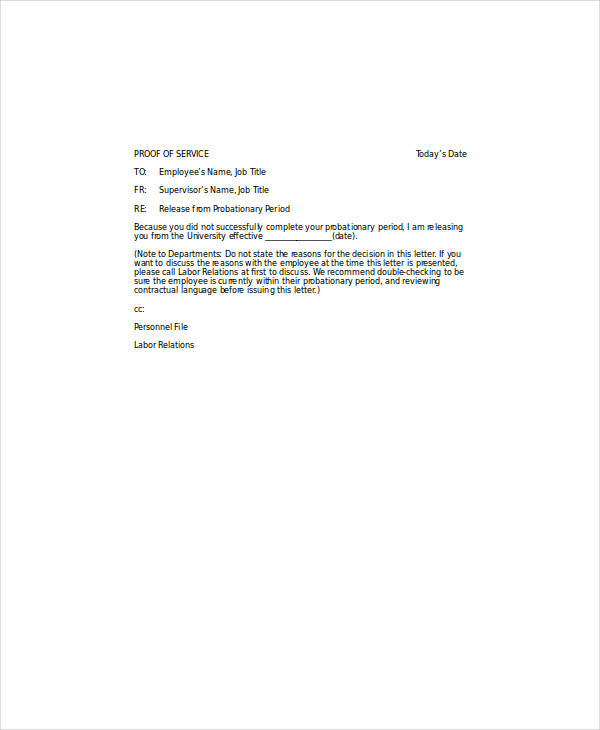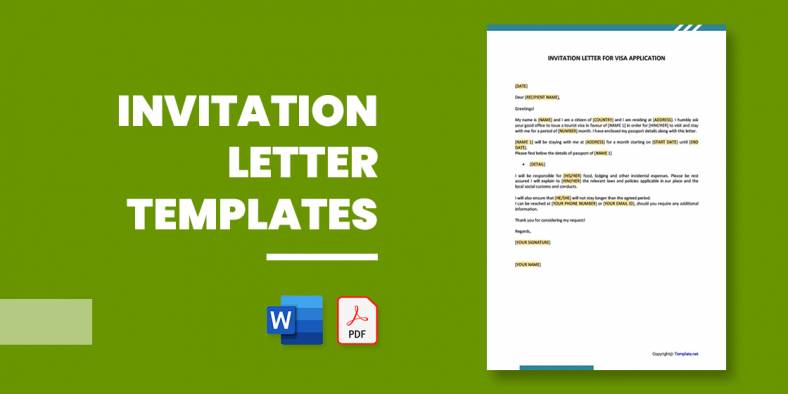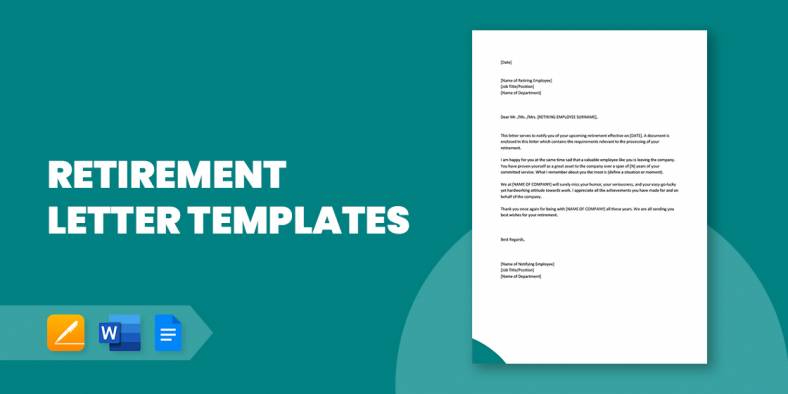
Thank You Letter for Appreciation – 19+ Free Word, Excel, PDF Format Download!
Letters expressing words that convey appreciation is a methodology that has been in existence since time immemorial yet many of…
Dec 02, 2024
A relieving letter is a formal document issued by an employer to an employee who is leaving the organization, confirming their resignation and relieving them of their responsibilities. This letter serves as proof of the employee’s tenure, highlights their contributions, and ensures a smooth transition by outlining any final clearances or handovers. Often required by new employers during onboarding, a relieving letter reflects professionalism and compliance with organizational protocols. Understanding the structure and tone of a relieving letter is crucial to ensure clarity, mutual respect, and adherence to legal and corporate standards.

A relieving letter is a formal document issued to an employee by their employer upon resignation, confirming their departure and releasing them from duties. It plays a significant role in validating the employee’s tenure and ensuring a seamless transition. Below is a standard format for a relieving letter:
Include the company’s name, address, and contact information at the top of the letter.
Mention the date of issuance clearly.
Add the full name of the employee, their designation, and employee ID (if applicable).
Write a concise subject, such as “Relieving Letter.”
Address the employee formally (e.g., “Dear [Employee’s Name]”).
State the acceptance of the employee’s resignation and their last working day in the company.
Appreciate the employee’s efforts and contributions during their tenure.
Mention that all dues, responsibilities, and handovers have been settled.
Conclude with positive wishes for their future endeavors.
Include the name, designation, and signature of the authorized person issuing the letter.



When you will be applying for another company, employers will want physical proof that you have indeed officially resigned from your previous job. This means that you will need to provide your prospective employer with a relieving letter in PDF. This article is going to teach you all that you need to know to create a proper relieving letter outline. You may also see job relieving letters.
 scribd.com
scribd.com yourhrworld.com
yourhrworld.com sydney.edu.a
sydney.edu.a loudoun.gov
loudoun.gov estrellamountain.edu
estrellamountain.edu yourhrworld.com
yourhrworld.com aoucbwb.com
aoucbwb.com arjalaw.com
arjalaw.comThis type of letter should be issued to you on the same day that your resignation from a company has officially been accepted. If a company has yet to issue you a relieving letter, then that can only mean certain complications are preventing them from doing so. Remember that this letter is proof that you are no longer employed by the company to ask it from your employer immediately. You may also see formal letter in Pages.
As mentioned recently, if you do not happen to receive your relieving letter, then that can only mean several issues are responsible for you not getting it. They’re all related to the fact that you may have a couple of unfinished sample business plans with the company, meaning that you won’t be able to officially resign unless you have finished every single one of them. You may also see sample business letter templates.
For example, there may be a company project that you have been tasked with and its complexity can only be handled by someone with your skills and knowledge. So let’s say that you’ve decided to resign while the project is only halfway finished. If it happens, then that means your employers will be hesitant in letting you go until the current project has been completed, thus resulting in you not acquiring the relieving letter. This means that if you want to resign with the letter in your hands, you’ll have to finish the project first. You may also see the best formal resignation letters.
Many other reasons could be preventing you from acquiring the letter. It may be because there are certain documents that you’ve forgotten to fill out and hand over to the right authorities within the company, there has yet to be a replacement that can be found to fill the hole that you plan outline to leave and much more. The moment you figure out what these issues are, then all you have to do is make sure you’re able to solve every one of them so that you can get the relieving letter and resign from the company. You may also see formal letter templates in Outlook.
 elizabethetavares.com
elizabethetavares.com ferpa.uconn.edu
ferpa.uconn.edu hr.ucr.edu
hr.ucr.edu cmhwebserve.co
cmhwebserve.co citehr.com
citehr.com cse.iitb.ac.in
cse.iitb.ac.in dhsekerala.gov.in
dhsekerala.gov.in albany.edu
albany.edu contracteasily.com
contracteasily.com
A relieving letter is a formal document provided by an employer to an employee who has formally resigned from their position. It serves as an acknowledgment of the employee’s resignation letter and confirms their release from duties and responsibilities within the organization. This letter acts as proof of the employee’s tenure, ensures that all dues and clearances have been settled, and is often required by the new employer during the hiring process to validate the employee’s professional transition.

Start the letter on the company’s official letterhead to maintain professionalism and authenticity.
Mention the date on which the letter is being issued.
Clearly state the employee’s full name, designation, and employee ID (if applicable).
Use a concise subject such as “Relieving Letter.”
Address the employee respectfully, such as “Dear [Employee’s Name].”
State the acceptance of the resignation letter and confirm the employee’s last working day in the organization.
Confirm that the employee has completed all pending tasks, handovers, and clearances.
Acknowledge the employee’s contributions and efforts during their tenure.
Wish the employee success in their future endeavors.
End the letter with the name, designation, and signature of the authorized person issuing the letter.
You can ask HR for a relieving letter by sending a polite email or written request stating your resignation details, including your last working day, and requesting the issuance of the letter for your records or future employment needs.
To get an immediate relieving letter, explain your urgency to HR, ensure all pending tasks and clearances are completed, and request expedited processing due to specific circumstances like joining a new job.
A relieving letter is important as it serves as proof of your resignation, confirms the completion of your duties, and is often required by future employers during the hiring process to ensure a smooth transition.

Letters expressing words that convey appreciation is a methodology that has been in existence since time immemorial yet many of…

Always have your letter written on time before the day you want to quit the job. A period of two…

It isn’t easy to talk to someone you have only met for the first time. Opening up to them, especially…

There will always come a time when a nurse decides to leave an institution and move on to other opportunities,…

Do you want to adopt a child or a sister and brother and become the best parents? You may have…

From time to time, you may be called upon to write a reference letter for a colleague. In that case,…

How to Write Invitation Letter Heading Living in a fast-paced world is never easy, but thanks to modern-day internet technology,…

Writing a termination letter is not easy. The situation is usually further complicated if the parties involved in termination are…

When the bell to put away your work cloth rings, you know it is time to pick up a retirement…